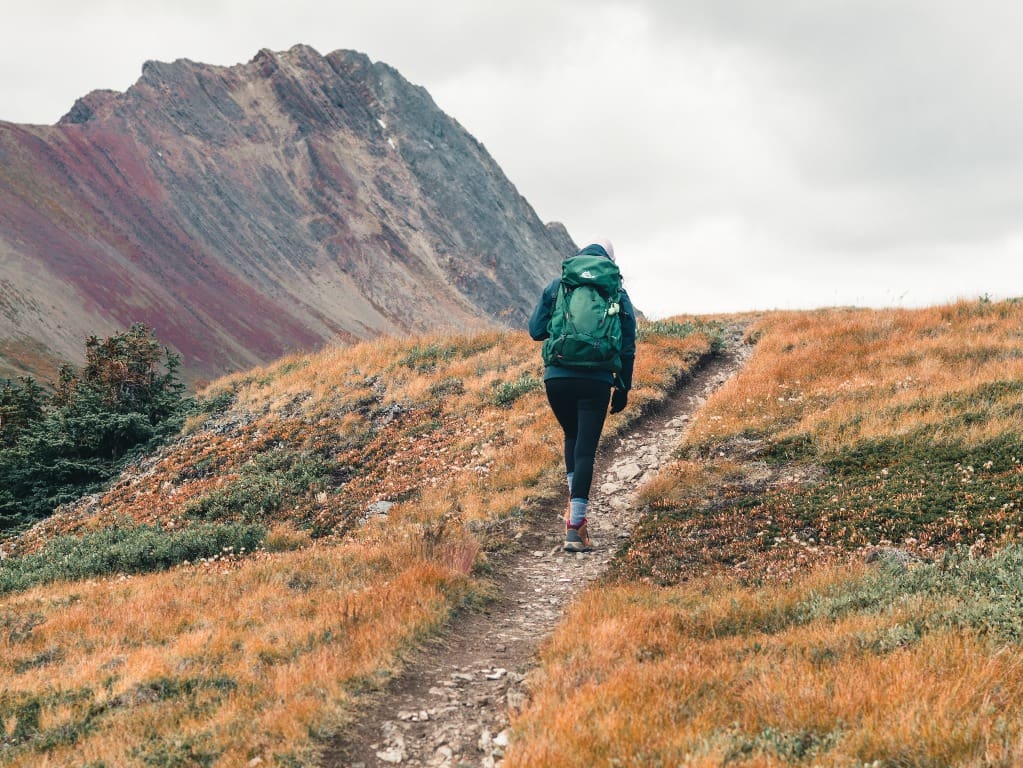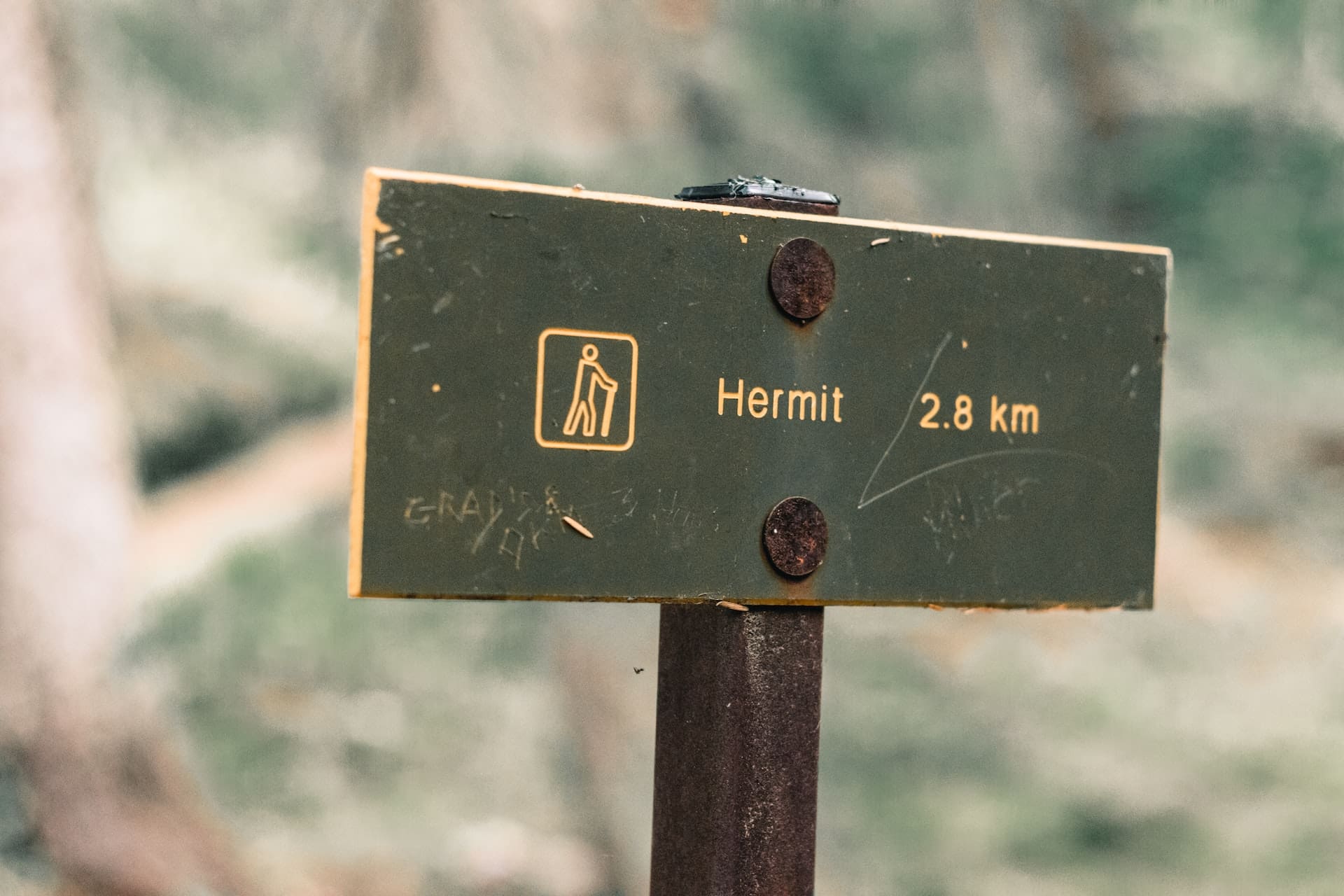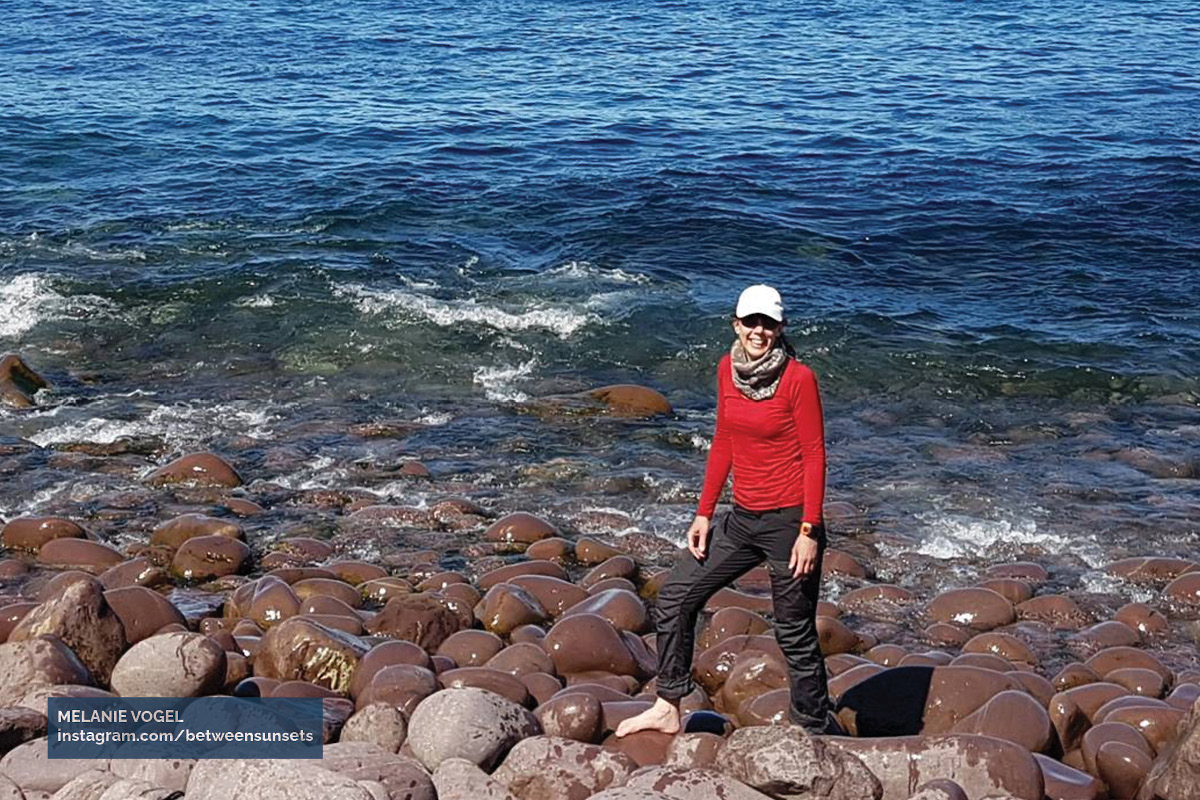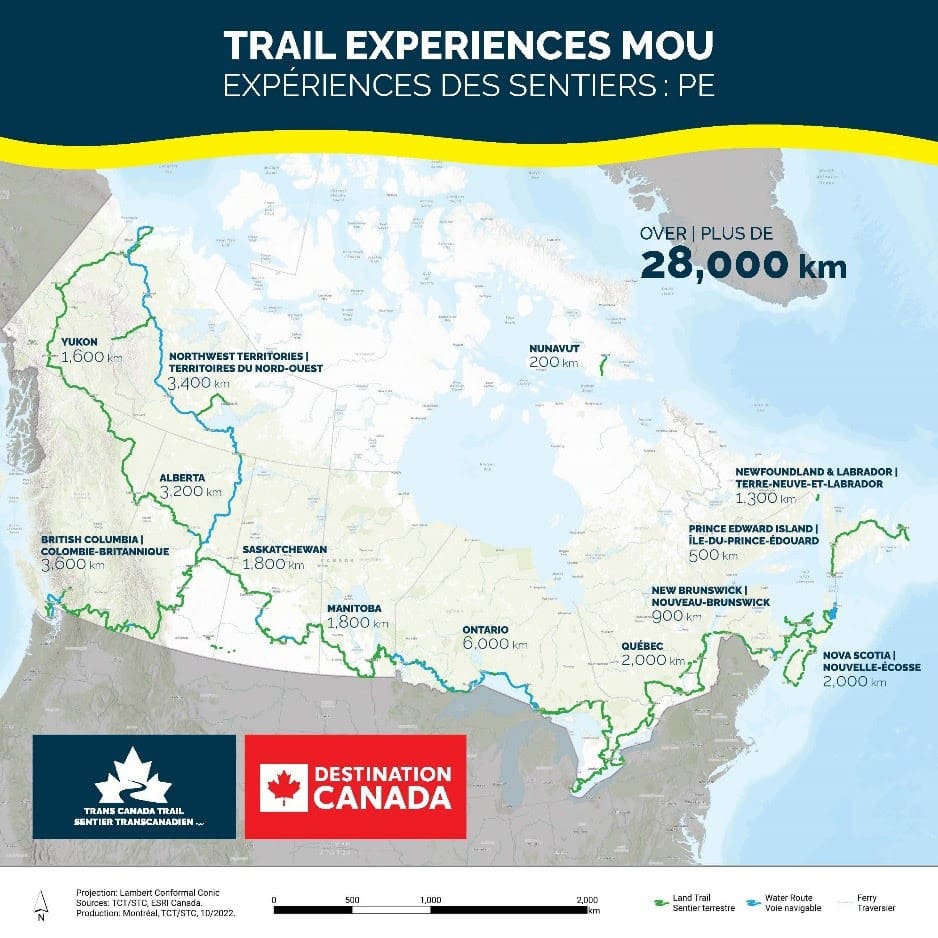Trans Canada Trail and Destination Canada form new partnership
IAN STALKER
The pandemic appears to have pushed us closer to Mother Nature and is leading us to show her more compassion as well.
Eleanor McMahon, president of the Trans Canada Trail — which links communities across the nation for the likes of hikers — says trail usage has risen dramatically since the onset of Covid, with health concerns appearing to lead many to shun the often-crowded indoors for the sparsely populated Great Outdoors.
“Our research that we’ve conducted with Léger demonstrates how people in Canada embraced trails, particularly during the pandemic,” she says. “Our numbers indicate that trail usage was up nearly 50% since the onset of Covid and an overwhelming (but not surprising) 99% of Canadians say they will continue using trails post-pandemic.
“Many people are in pursuit of outdoor adventure when they travel. There is a newer concept at play – regenerative tourism. It represents a sustainable way of travelling and discovering new places. Its main goal is to ensure that visitors have a positive impact on their vacation destination, meaning that they leave it in a better condition than how they found it. A concept that goes beyond ‘not damaging’ the environment and that aims to actively revitalize and regenerate it, resulting in a positive cycle of impacts on local communities and economies that goes beyond just sustainability.

“Regenerative tourism is a burgeoning best practice worldwide. And in many ways it represents the future of travel.”
McMahon says Trans Canada Trail National Trail – the world’s longest such trail at over 28,000 km – resulted from a “story of dreamers and doers: in 1992 Quebecker Pierre Camu and Albertan Bill Pratt envisioned a national trail that would connect people across this country to nature and to one another. Five years later in 2017, during Canada’s sesquicentennial year, the trail celebrated the milestone achievement of coast to coast-to-coast connection.”
The trail recently partnered with Destination Canada, which promotes this country as a tourism destination, and McMahon says landscapes trail users will encounter are seeing a greater appreciation from the travelling public, which serves Canadian tourism well.
“I believe it’s the simplicity and newfound appreciation for our natural surroundings,” she says. “Throughout the pandemic we grew to appreciate our own backyard and Canadians actively shared their photos and experiences via social media – which not only united the country but contributed to this growing interest in hiking and adventure-focused travel.

“The onset of the global pandemic highlighted the importance of harnessing the potential of outdoor tourism – particularly in the context of opportunities to support local businesses and year-round/shoulder season tourism offerings. At Destination Canada, their mandate is to support the growth and vitality of tourism across the country. And, now as we all compete for travellers in the ferociously competitive new world of travel, Canada’s wide-open spaces and cities wrapped in nature are a unique advantage.
“Trans Canada Trail is a vital component of Canadians’ everyday lives and is an incredibly valuable resource for our visitor economy in terms of both domestic tourists — and the guests we welcome to Canada every single day.
“The pandemic truly has emphasized the need for our industry to work in unison. Only when we align and create meaningful partnerships like this, can we bolster Canada’s global tourism competitiveness, while generating wealth and wellbeing for our communities and enriching the lives of our guests.

“We are entering into this Memorandum of Understanding (with Destination Canada) as a way to capture our work together – and our shared priority – to improve and support the creation of trail destinations for Canadians and international guests by exploring opportunities for sharing resources, knowledge and expertise between the two parties. I’m so proud to have Destination Canada as our partner.
“This year, we are overjoyed to celebrate our 30th anniversary. Thirty years of connecting Canadians through 15,000 communities across every province and territory inclusive of the beauty, vitality and both the cultural natural history of our country. Eighty percent of Canadians live within 30 minutes of the Trans Canada Trail.”
Meanwhile, McMahon says the trail continues to be a work in progress, attracting interest from different destinations that aren’t now part of it.
“While the Trans Canada Trail is connected, it is never complete,” she says “It continues to grow as we develop new sections and enhance others. Many communities across Canada are seeking to become part of the Trans Canada Trail – our ongoing investments in infrastructure projects make this possible.”

“Our research, including a report by the Conference Board of Canada, tells us that trails are vital in supporting the well-being of Canadians, and that trails tourism is an under-leveraged opportunity in Canada. We have a tremendous opportunity to activate our trail-based tourism economy, supporting job creation, economic development in local communities as we do so.
“We are incredibly proud to partner with Destination Canada for this first-of-its kind initiative, to elevate and leverage the assets inherent in Canada’s trail networks and to collaborate with Destination Canada in supporting tourism in Canada – post-pandemic – in a way that is sustainable and meaningful for local communities.”

Hiker-adventurer Melanie Vogel recently became the first woman to complete a coast-to-coast-to-coast hike on the Trans Canada Trail.
Facts and Figures:
- The Trans Canada Trail spans over 28,000 km across land and water, across every province and territory.
- 80% of Canadians live within 30 minutes of a Trail section.
- Since the onset of COVID, trail use increased by close to 50%
- 95% of Canadians say their increased use boosts their mental and physical health
- 99% of Canadians intend to keep using trails in their communities, and beyond, post-pandemic


















